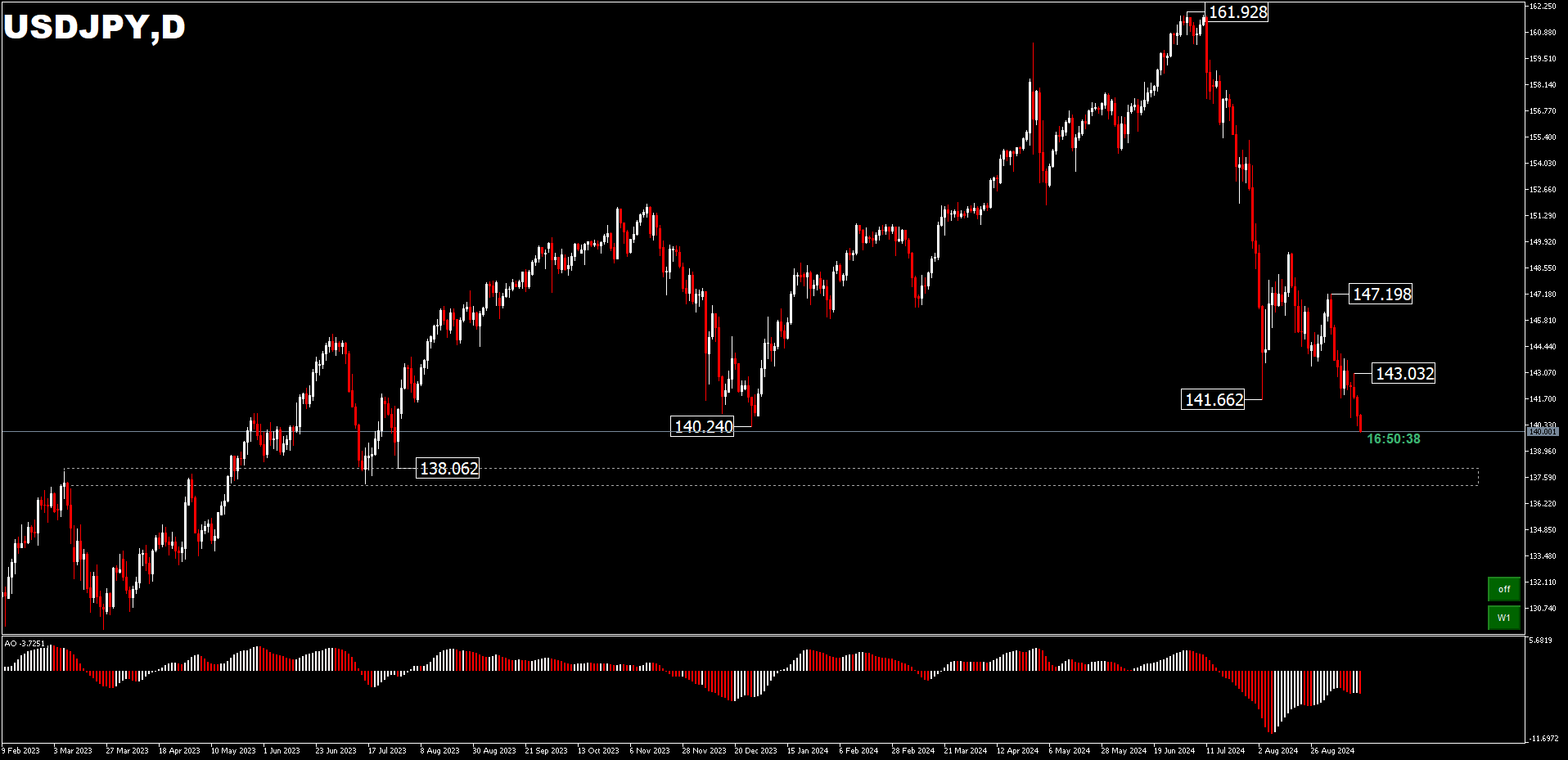USDJPY dropped to a 13-month low to the psychological 140.00 mark. Over the past 4 weeks, USDJPY fell 4.49%, and in the past 12 months, it fell 5.06%.
The Japanese yen rose to around 140.00 in holiday-quiet trade on Monday, near its highest level since July 2023 amid widening monetary policy divergence between Japan and the US. The Bank of Japan is widely expected to keep rates on hold this week while leaving open the possibility of another rate hike, perhaps as early as October.
BoJ board member Naoki Tamura said last week that the central bank should raise short-term interest rates by at least around 1% until fiscal year 2026 to achieve its 2% inflation target in a stable manner. He also said that the central bank will continue to raise interest rates if the economy and inflation move in line with its forecast. On the other hand, the US Federal Reserve is expected to cut interest rates for the first time in four years this week, with market prices currently leaning towards a larger 50 basis point reduction.
Next week, the Bank of Japan will deliver its latest monetary policy decision. Markets expect the central bank to keep its policy rate at around 0.25%. Although the market believes the economic rationale for further BoJ rate hikes is intact, policymakers may still wait for a while longer, given the market turmoil in early August. In terms of the economic rationale for a rate hike, headline and underlying price pressures remain high in Japan, with core CPI (excluding fresh food) increasing slightly in July.
Next week, we will get the latest inflation figures for August. Wage growth has also been solid. Headline labour cash earnings grew 3.6% y/y in July, a high pace by historical standards. In addition, economic growth data released since the last BoJ meeting has also been encouraging. The combination of these factors makes the market confident that the BoJ will raise its policy rate further, but potential lingering concerns over market turmoil in early August may make the BoJ wait a little longer to raise it. Until then, the central bank will most likely raise its policy rate by 25 bps at its meetings in January and April 2025, to reach a policy rate of around 0.75% by the middle of next year.

In the FX market, USDJPY’s decline from 161.92 continued with a break of 141.66 support last week. The initial bias remains on the downside this week for the 140.24 level. A decisive break there will bring greater bearish implications for 138.06. On the positive side, a move above 143.03 resistance will turn the intraday bias to neutral first. But the outlook will remain bearish as long as 147.19 resistance holds, in case of recovery.
Click here to access our Economic Calendar
Ady Phangestu
Market Analyst – HF Educational Office – Indonesia
Disclaimer: This material is provided as a general marketing communication for information purposes only and does not constitute an independent investment research. Nothing in this communication contains, or should be considered as containing, an investment advice or an investment recommendation or a solicitation for the purpose of buying or selling of any financial instrument. All information provided is gathered from reputable sources and any information containing an indication of past performance is not a guarantee or reliable indicator of future performance. Users acknowledge that any investment in Leveraged Products is characterized by a certain degree of uncertainty and that any investment of this nature involves a high level of risk for which the users are solely responsible and liable. We assume no liability for any loss arising from any investment made based on the information provided in this communication. This communication must not be reproduced or further distributed without our prior written permission.



















